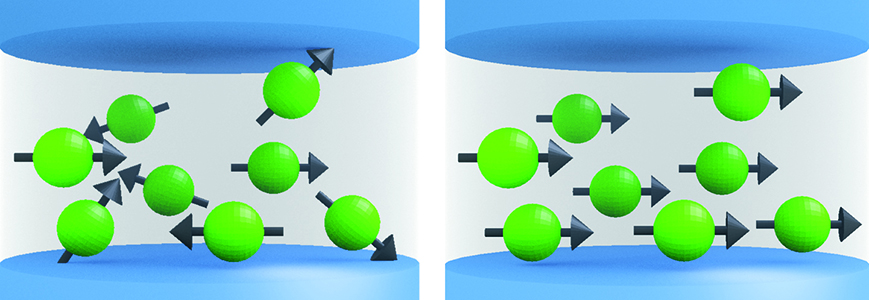Computers That Think Like People?

NIST researchers have built what may be the missing piece for ‘artificial brains.’
Computers do many things better than our brains can. But one area where brains tend to outperform computers is in tasks such as perception, decision making, and context recognition. A reason for this is that our brains process data both in sequence and simultaneously, and they store memories in synapses — connections between the brain’s nerve cells — all over the system. A conventional computer processes data only in sequence and stores memory in a separate unit.
Devices mimicking the brain’s nerve cells have been developed. But until now, a crucial piece of the puzzle — “efficient” synapses, or synapses that don’t require too much energy — has been missing.
Now, NIST scientists have designed and built an efficient artificial synapse, a superconducting switch that “learns” like a biological system. The switch could be used to store memories in future computers that operate like the human brain.
The NIST synapse can fire much faster than the human brain — 1 billion times per second, compared to an average nerve cell in the brain, which is closer to 50 times per second. The NIST synapse uses less energy too, about one ten-thousandth as much.
In the brain, the synapse controls whether a signal passes from one nerve cell — also called a neuron — to another. If the signal is strong enough, the synapse lets it through. As more signals are sent, the synapse becomes more receptive. This strengthens the neural connection, enabling learning.
NIST’s artificial synapse is a tiny metal cylinder sitting in a magnetic field. Like a real synapse, the cylinder only allows an electrical signal to pass if that signal is strong enough. Inside the cylinder are nano-sized clusters of material that act like miniscule bar magnets. The magnets start out disordered, all pointing in different directions. But each time the synapse fires, more of those little magnets point in the same direction. This reduces the amount of electrical current that is needed to make the synapse fire again. Strengthening the connection between input and output enables the artificial synapse to “learn,” just a like the synapses in your brain.
The NIST artificial synapses could be useful for something called neuromorphic computing, which is envisioned as a new type of artificial intelligence. Neuromorphic computers could boost perception and decision-making for applications such as self-driving cars and cancer diagnosis.
Contacts
-
PML webmaster

